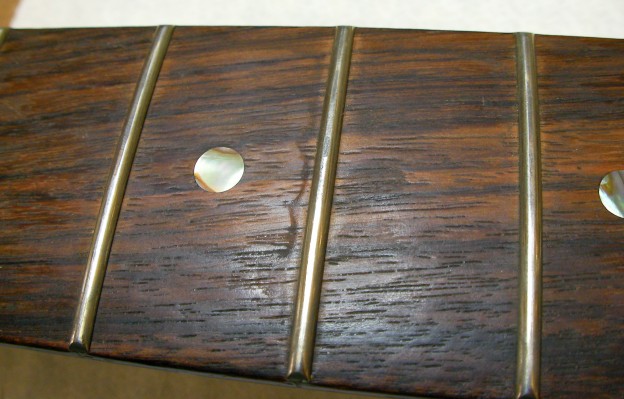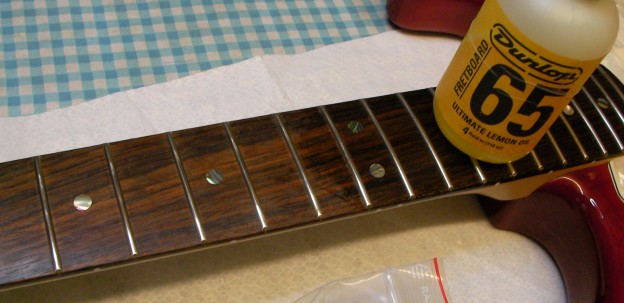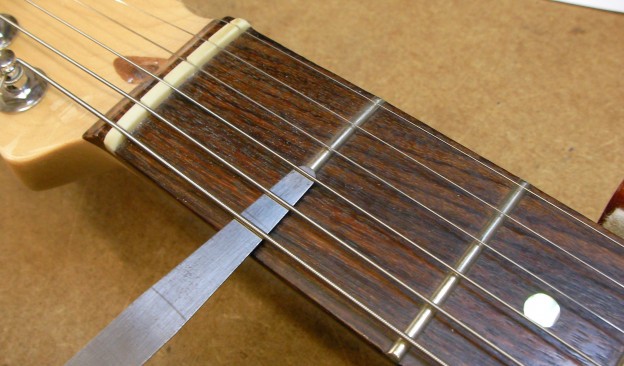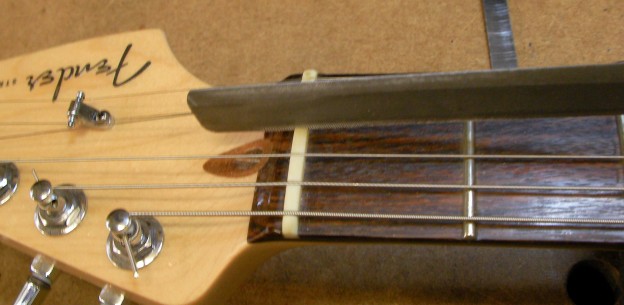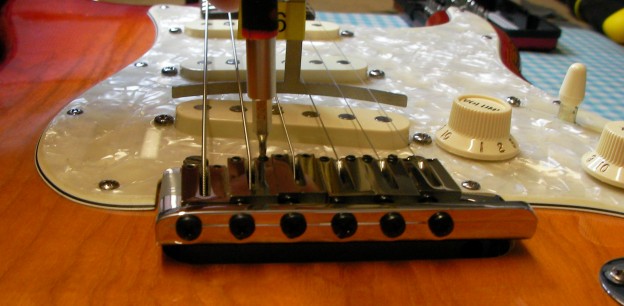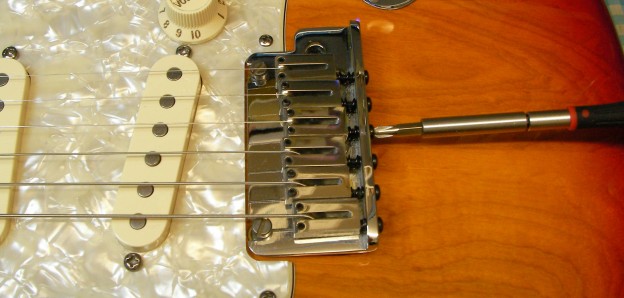Had a rather nice US Stratocaster on the bench today. Nothing major, just a clean and setup.
I rather like the body, nice paint finish over a very nice piece of wood….
The fretboard was a little grubby…
A quick rub down with some steel wool will remove that and polish the frets at the same time. I tends to leave the wood a little dry so a little lemon oil to restore the finish…
With a new set of strings I’ll work through a standard setup.
Step one: The neck set, measured half way up the neck…
It was a little large so a quick tweek of the truss-rod…
Next the action height at the 1st fret….
It wasn’t bad but I’ve lowered it by a couple of thou’ …
Next the action height at the 12th fret. It was a little high so I’ve lowered the bridge a little. The great thing about Fender bridges is each saddle is adjusted separately. The down side is that each saddle is adjusted separately! It gives great flexibility but means raising or lowering the action is a little more time-consuming…
Once the outside “E” strings are set the rest need to be set one at a time using a radius gauge to make sure all the strings are the same height above the fret-board.
Once that’s done adjust the bridge left and right to lengthen or shorten the string….
You should get the same note if you “ping” the harmonic at the 12th fret as played there. A good accurate tuner makes all the difference..
With the setup of the strings done the last item is the height of the pickups. That in itself is a bit of a black art. You can look up settings on the net or published in books but it’s also a personal preference. The lower the pickup the lower the output and the duller the sound. The higher the pickup the louder the sounder and the crisper/sharper the sound. Too high though and it can cause distortion. If the string is too close to the poles of the pickup the magnet will even pull it out of tune. There is also the balance of the relative volumes from each pickup.

